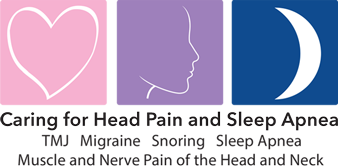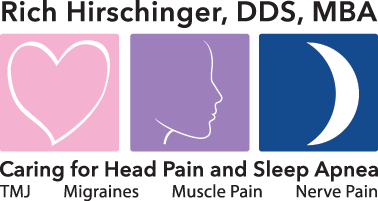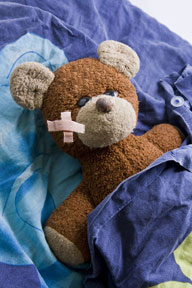

Rich Hirschinger, DDS, MBA
Diplomate American Board of Orofacial Pain
9615 Brighton Way, Suite 323
Beverly Hills, CA 90210
888.981.8981
Diplomate American Board of Orofacial Pain
9615 Brighton Way, Suite 323
Beverly Hills, CA 90210
888.981.8981
 Groups at Risk of Myofascial Pain
Groups at Risk of Myofascial Pain
More About Myofascial Pain
- Women: Myofascial trigger points are more likely to be active in women than in men, with 55 percent of women having latent trigger points, compared to 45 percent in men. The reason for this is unknown, however it is not believed that women and men experience pain differently or measure pain based on different scales.
- Middle-age adults: Chronic myofascial pain most frequently develops during middle age. At younger ages, it's believed that muscles are better able to cope with the strain of stress and overuse.
- Injured: Injury, trauma or illness increases the odds of developing or activating myofascial trigger points.
- Stressed: An individual may aggravate a myofascial trigger point as a result of stress or anxiety that leads to increased muscle tension.
- Inactive: A sedentary lifestyle or significant time spent in poor posture, such as at a desk, can weaken and strain muscles, making the occurrence of a myofascial trigger point more likely.
Overall physical health lowers risk factors associated with myofascial pain symptoms. Having well conditioned strong muscles that can easily handle everyday activities puts an individual at lower risk of the condition. Likewise, the absence of injury, which tightens muscles and makes activity difficult without fatigue or pain, lessens the likelihood of experiencing myofascial pain.
While diet does not directly link to myofascial pain syndrome, overweight individuals are at higher risk as muscles are strained to carry the body's mass. Removing stressful factors from one's life can also decrease the risk of myofascial pain, as muscles are prone to tension and tightness as a result of stress.
While everyone carries some risk of experiencing myofascial pain symptoms, by improving physical and mental health in general and on multiple dimensions, risk factors for myofascial pain can be reduced.






